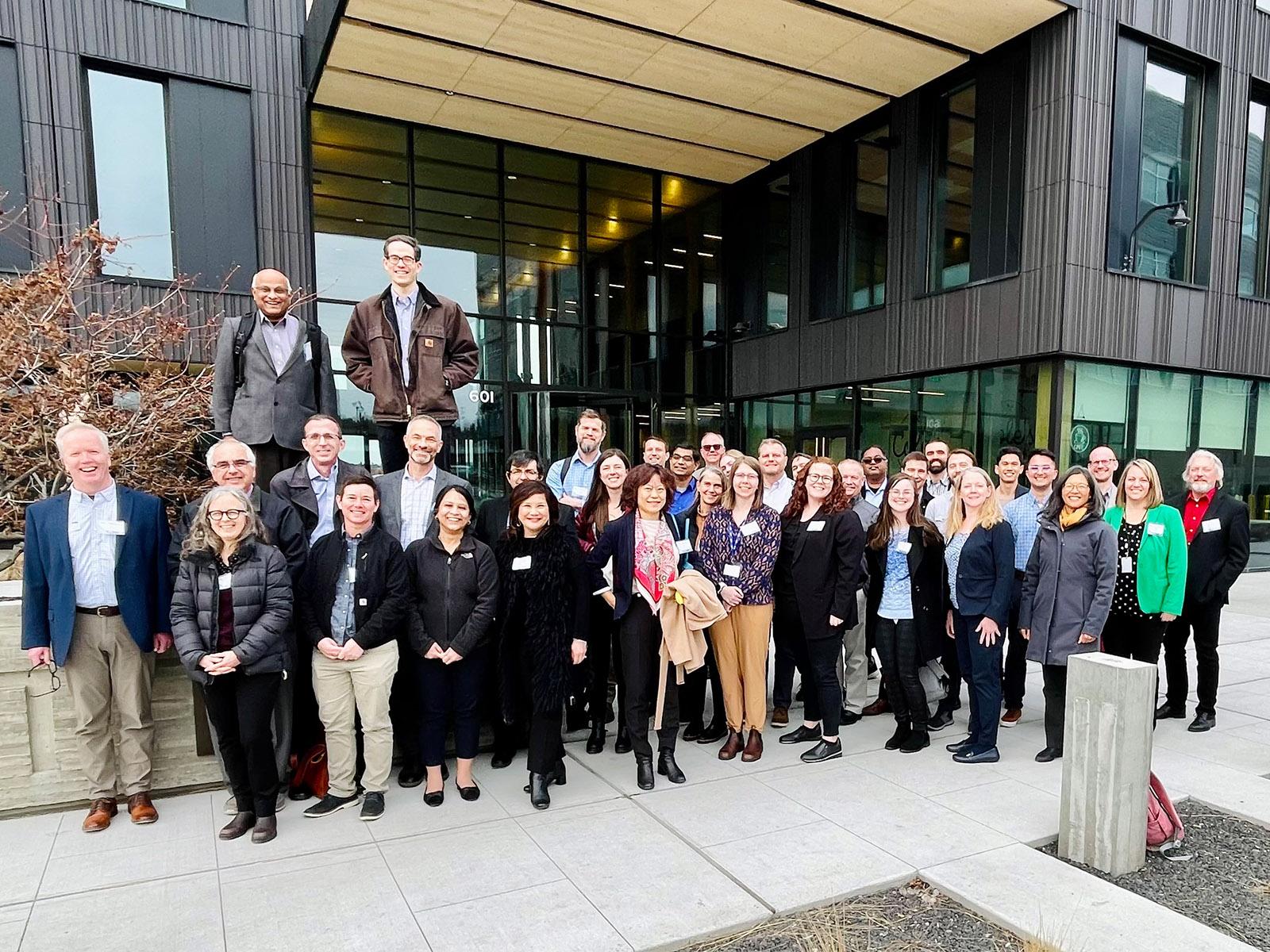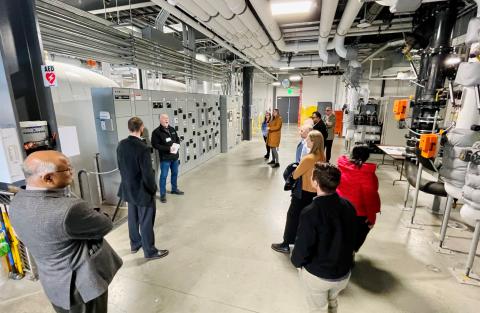Building-Grid Ideas Ascend to Summit
Pacific Northwest National Laboratory helped coordinate a March meeting in Spokane, WA, focused on five Connected Communities projects

Summit participants, pictured at the South Landing’s Catalyst Building, hope to gather annually to continue dialog around the Connected Communities projects in the Western United States.
(Photo by Kelsey Adkisson | Pacific Northwest National Laboratory)
The first-ever Northwest Connected Communities Summit—co-hosted by Edo and Avista in partnership with Pacific Northwest National Laboratory (PNNL)—surfaced new ideas that could help realize a vision of office buildings, stores, schools, homes, and other structures symbiotically communicating with and aiding the operation of the power grid.
Experts believe this coordination, also referred to as grid-interactive buildings or building-grid integration, is central to positioning America’s energy system to achieve future goals in efficiency, clean energy use, and decarbonization. Department of Energy (DOE)-funded Connected Communities projects are designed to demonstrate the capabilities of grid-interactive buildings across a wider range of technologies, locations, and building types.
PNNL’s Srinivas Katipamula, a staff scientist, noted the summit not only explored the innovative work of the five Connected Communities projects, but made progress on various fronts. “We identified some collaboration opportunities that could lead to solutions in key areas, including scaling plans, demand flexibility, equipment interoperability, engagement with building owners, and public outreach.”
Representatives of the Connected Communities projects acknowledged the value of the meeting, the insights gained from their peers, and the need to meet annually to continue benefitting from one another’s knowledge.
The March 20–21 summit was held in Spokane at Edo’s South Landing, an innovative example of a real-world development where smart, efficient buildings are integrated with the grid. “These buildings represent exemplars of what we believe is possible and what our Connected Communities project intends to scale,” said Hendrik Van Hemert, managing director of Edo, speaking about the Spokane Connected Community Project, one of those featured at the summit. Avista and McKinstry formed Edo to advance the South Landing EcoDistrict and other projects that enable a decarbonized grid through a building-centric approach.

“It was particularly interesting to hear how Avista and McKinstry have made this partnership work. It goes beyond the headline Edo partnership between their organizations,” said Brian Walker, Technologies Manager at DOE’s Building Technologies Office. “I was also impressed by how they encouraged innovation throughout their organizations—from the performance criteria that they were designing and the physical plant at the EcoDistrict, to the rapid, easy control gateway installations they are piloting.”
In addition to the Spokane Connected Community Project, the four other projects featured at the summit were:
- Utility Managed Distributed Energy Resources Intelligent Community (Salt Lake City and North Logan, UT)
- SmartGrid Asset Load Management & Optimized Neighborhood (Portland, OR)
- Deep Efficiency and Smart Grid Integrated Retrofits in Disadvantaged Communities (Seattle, WA)
- SunPower/KB Home Energy Smart Connected Communities (Menifee, CA).
PNNL is providing technical support to the Spokane and Salt Lake City projects.